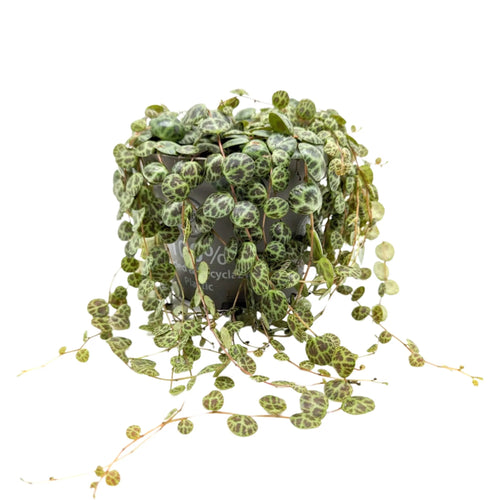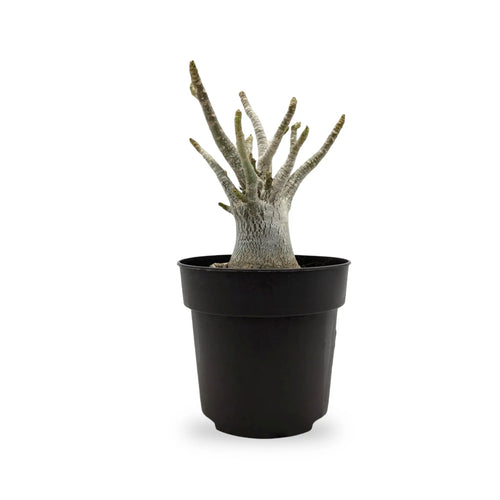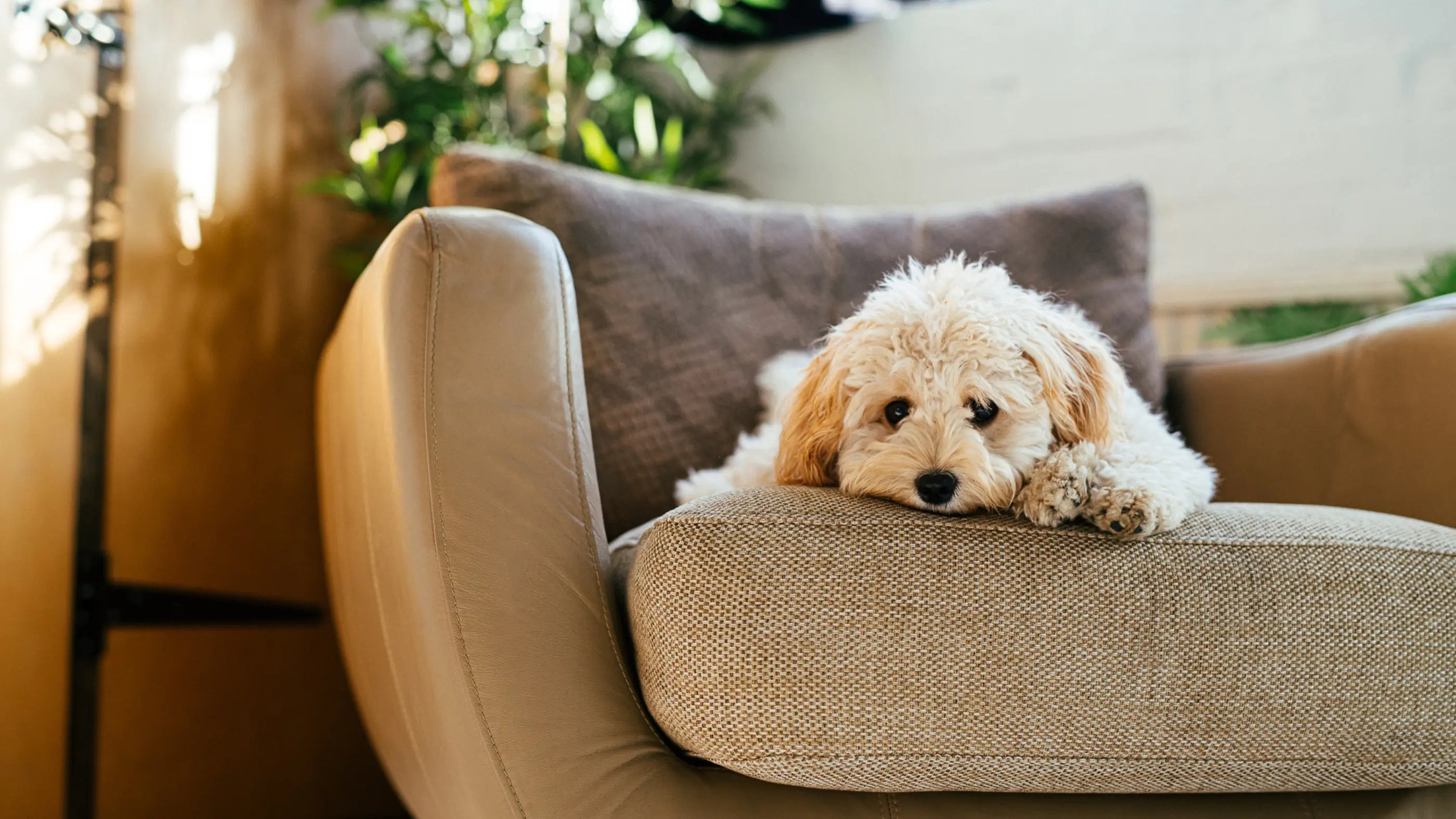During lockdowns, the surge in houseplant sales saw many of us transform our homes into lush green sanctuaries. With more time on our hands, creating indoor jungles became a delightful way to bring the beauty of nature inside.
From the serene elegance of peace lilies to the towering charm of Swiss cheese plants, houseplants have become a staple of interior decor. However, not all plants are dog-friendly. Some houseplants can be harmful to our four-legged companions, causing anything from mild digestive discomfort to severe health issues if ingested.
If you're a dog owner, it’s essential to know which plants to avoid or keep out of reach. Here’s a detailed look at eight common houseplants that are toxic to dogs:
1. Peace Lily (Spathiphyllum)
Peace lilies are celebrated for their glossy green leaves and striking white flowers, making them a popular choice for indoor spaces. However, these plants contain calcium oxalate crystals, which can be harmful to dogs. Ingestion can lead to:
-
Vomiting
-
Excessive drooling
-
Irritation of the lips, tongue, and mouth
-
Difficulty swallowing
If you suspect your dog has nibbled on a peace lily, consult a veterinarian promptly. Symptoms often manifest quickly, making it easier to identify the cause.
2. Aloe Vera (Aloe barbadensis)
Widely known for its healing properties for humans, aloe vera is less benevolent towards dogs. The plant contains saponins and anthraquinones, which can cause:
-
Vomiting
-
Diarrhea
-
Changes in urine color
-
Lethargy or depression
Though the gel inside aloe vera leaves is non-toxic to humans and used in skincare, the outer parts of the plant are harmful to dogs. Keep aloe vera well out of their reach.
3. Devil’s Ivy (Pothos)
Devil’s Ivy, admired for its cascading vines and heart-shaped leaves, is another plant toxic to dogs. Both the leaves and stems contain insoluble calcium oxalates, leading to:
-
Vomiting
-
Excessive salivation
-
Oral irritation
-
Difficulty swallowing
Fortunately, the immediate discomfort caused by chewing on this plant often deters dogs from consuming large amounts. However, even small nibbles warrant caution.
4. Swiss Cheese Plant (Monstera Deliciosa)
The iconic Swiss cheese plant, with its large, holey leaves, adds a dramatic touch to any interior. While its towering size often places it out of a dog’s reach, the plant’s leaves and stems are toxic if ingested. Symptoms include:
-
Oral irritation
-
Vomiting
-
Difficulty swallowing
It’s wise to ensure these plants are kept in spots inaccessible to curious pets.
5. Dragon Tree (Dracaena)
Dragon trees bring a tropical vibe to interiors and are known for their air-purifying qualities. However, they’re dangerous for dogs due to the presence of saponins. Ingestion can result in:
-
Vomiting, sometimes with traces of blood
-
Loss of appetite
-
Drooling
-
Lethargy
The severity of symptoms varies, but any signs of distress after contact with a dragon tree should prompt a visit to the vet.
6. Begonia (Semperflorens Cultorum)
Begonias, with their vibrant blooms, are a favorite for adding color to indoor spaces. However, they rank high on the toxicity scale for dogs. The tubers, in particular, are the most harmful part of the plant, causing:
-
Intense vomiting
-
Excessive salivation
-
Kidney failure in severe cases
Given the potential for serious health risks, it’s best to avoid begonias entirely if you have dogs.
7. Jade Plant (Crassula Ovata)
Jade plants, also known as money plants, are a type of succulent prized for their thick, glossy leaves. Despite their sturdy appearance, they’re toxic to dogs. Ingestion can cause:
-
Vomiting
-
Diarrhea
-
Lethargy
Their compact size often makes them easy to place out of reach, minimizing the risk to pets.
8. Snake Plant (Sansevieria trifasciata)
Snake plants, also called Mother-in-Law’s Tongue, are striking and easy to care for, making them a popular choice for many homes. However, they contain saponins, which can lead to:
-
Vomiting
-
Diarrhea
-
Mild nausea
While symptoms are usually mild, it’s crucial to keep snake plants away from areas your dog can access.
What to Do if Your Dog Ingests a Toxic Plant
If your dog consumes any part of a toxic plant, act quickly:
-
Identify the plant: Knowing the plant’s name helps the vet determine the best course of action.
-
Contact your veterinarian immediately: Provide details about the plant and the amount ingested.
-
Bring a sample of the plant: If possible, take a piece of the plant along to the vet for accurate identification.
-
Monitor your dog closely: Watch for symptoms like vomiting, drooling, or changes in behavior.
Timely intervention is crucial in managing plant toxicity and ensuring your pet’s safety.
Creating a Dog-Safe Plant Environment
For dog owners who love greenery, there are ways to enjoy plants while keeping your pets safe:
-
Choose non-toxic plants: Opt for pet-friendly varieties like spider plants, calatheas, and parlour palms.
-
Place plants strategically: Use shelves, hanging pots, or tall stands to keep plants out of your dog’s reach.
-
Train your dog: Teach your dog to avoid chewing on plants through positive reinforcement.
-
Use deterrents: Apply pet-safe sprays to discourage chewing.
By taking these precautions, you can enjoy the beauty of houseplants without compromising your pet’s well-being.
Conclusion
Houseplants add vibrancy and life to our homes, but pet owners must be cautious when choosing greenery. Knowing which plants are toxic to dogs can help prevent health emergencies and keep your furry friends safe. While the allure of a lush indoor garden is hard to resist, prioritizing your pet’s safety ensures a harmonious coexistence between plants and pets. Always research plant species before bringing them into your home and consult your vet if you have any doubts about their safety. A more substantial list of toxic plants for dogs, both indoor and outdoor, can be found on the Dog’s Trust website.










